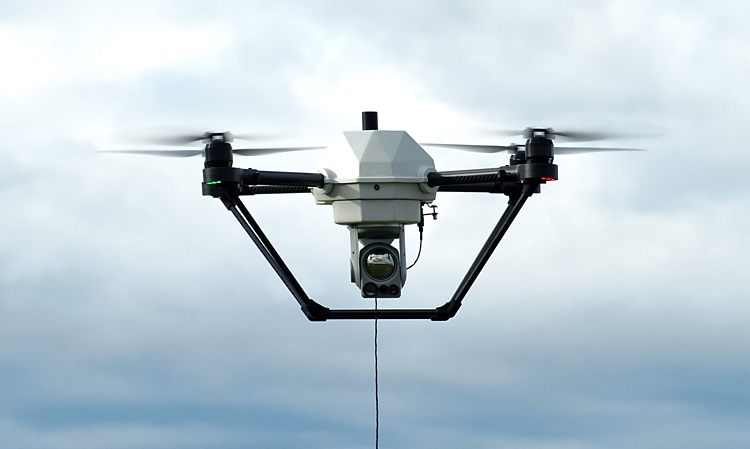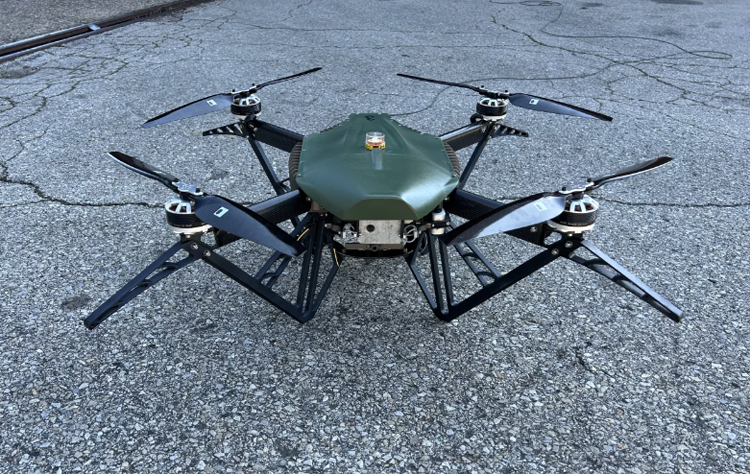INDIAN ARMED FORCES CHIEFS ON OUR RELENTLESS AND FOCUSED PUBLISHING EFFORTS

The insightful articles, inspiring narrations and analytical perspectives presented by the Editorial Team, establish an alluring connect with the reader. My compliments and best wishes to SP Guide Publications.

"Over the past 60 years, the growth of SP Guide Publications has mirrored the rising stature of Indian Navy. Its well-researched and informative magazines on Defence and Aerospace sector have served to shape an educated opinion of our military personnel, policy makers and the public alike. I wish SP's Publication team continued success, fair winds and following seas in all future endeavour!"

Since, its inception in 1964, SP Guide Publications has consistently demonstrated commitment to high-quality journalism in the aerospace and defence sectors, earning a well-deserved reputation as Asia's largest media house in this domain. I wish SP Guide Publications continued success in its pursuit of excellence.
- A leap in Indian aviation: Prime Minister Modi inaugurates Safran's Global MRO Hub in Hyderabad, Calls It a Milestone
- All about HAMMER Smart Precision Guided Weapon in India — “BEL-Safran Collaboration”
- India, Germany deepen defence ties as High Defence Committee charts ambitious plan
- True strategic autonomy will come only when our code is as indigenous as our hardware: Rajnath Singh
- EXCLUSIVE: Manish Kumar Jha speaks with Air Marshal Ashutosh Dixit, Chief of Integrated Defence Staff (CISC) at Headquarters, Integrated Defence Staff (IDS)
- Experts Speak: G20 Summit: A Sign of Global Fracture
Tethered Drones
Even in challenging environments, tethered drones can transmit data, enabling various applications like persistent aerial surveillance, telecommunications, and observation
 |
The Author is Former Director General of Information Systems and A Special Forces Veteran, Indian Army |

According to news reports of September 5, 2025, the Indian Army will be deploying 5,000 tethered drones to guard the country’s frontiers in all kinds of terrain and associated weather conditions across the Indian sub-continent up to altitudes of 18,000 feet. Tethered drones are unmanned aerial vehicles (UAVs) physically connected to a ground station by a cable that provides continuous power and a secure, high-bandwidth data link. This enables extended flight durations that can carry on for several hours or days at a stretch. This makes them ideal for applications like continual surveillance, disaster monitoring and telecommunications because battery life is a significant limitation for traditional free-flying drones.
A request for information (RFI) issued by the Ministry of Defence (MoD) recently states that the tethered drone systems can provide integral beyond line of sight (LOS) surveillance capability to tactical commanders with prolonged endurance. This drone will be operational by day and night including light rain and snow and in temperatures from minus 50 degrees Celsius to 45 degrees Celsius. According to another report, the Indian Army signed contracts to procure 130 tethered drone systems from domestic manufacturers in 2023, to provide continuous surveillance and intelligence gathering, particularly in high-altitude areas like the Line of Actual Control (LAC) with China. These drones are equipped with electro-optical and infrared (EO/IR) payloads for both day and night monitoring.
Indian Army, as also the other two services, are increasingly relying on drones for a variety of critical operational tasks like attack, surveillance and reconnaissance, logistic support, communications and even counter-drone operations.
A combined EO/IR payload, minimum flying endurance of nine hours and flying altitude of at least 100 metres in the tethered mode, and flying endurance of at least 60 metres and altitude of 1,000 metres with an operating radius of at least 10 km in the non-tethered mode are among other technical requirements. The drones will also have an in-built battery to enable operations like a regular drone or for emergency back-up. Besides having counter electronic warfare capability, the system, which would be operated by a single person, would also be compatible with GPS, satellite navigation systems and digital maps. The Army is looking for systems with a modular design to enable seamless upgradation of individual components through simple modifications without any design or structural changes. It should also facilitate integration and installation as well as easy upgradation with future technology without impacting the performance of any system or sub-system.

The September 5 news report further states that the Indian Army, as also the other two services, are increasingly relying on drones for a variety of critical operational tasks like attack, surveillance and reconnaissance, logistic support, communications and even counter-drone operations. Drones, while being cost-effective, are also force multipliers, and also reduce the risk to human life. Several types of drones are being used by the Armed Forces, both indigenous and foreign, and several drone development programs are ongoing in India.
The US military is using tethered drone systems for: protecting forward operating bases by providing continuous, 360-degree aerial surveillance; enhancing communications range; providing secure overwatch and maintaining persistent surveillance in electromagnetically contested environments
Even in challenging environments, tethered drones can transmit data, enabling various applications like persistent aerial surveillance, telecommunications, and observation, as seen with Elistair's Orion 2.2 TE and similar systems. With no need for heavy onboard flight batteries, the drone can carry heavier payloads, such as more sophisticated cameras or communications equipment. The tether acts as a physical safety barrier, preventing "fly-away" incidents that can occur with conventional drones, which makes tethered drones suitable for use in high-security or sensitive areas. Tethered drones provide persistent intelligence, surveillance, and reconnaissance (ISR) for military and law enforcement operations, including protecting forward operating bases.
The US military is using tethered drone systems developed and supplied by American companies like Zenith Aerotech Dragonfly Pictures (DPI UAV Systems) for: protecting forward operating bases by providing continuous, 360-degree aerial surveillance; enhancing communications range for ground forces by acting as an elevated relay node; providing secure overwatch for convoys and other mobile units; maintaining persistent surveillance in electromagnetically contested environments where wireless drones could be jammed or spoofed. Many militaries and border agencies in Europe use tethered drones, with French company Elistair being a prominent supplier. The French armed forces use Elistair's tethered drone systems for border and base protection.
The primary weakness of a tethered drone is its physical tether, which connects it to a ground station for power and data.
China is actively using and developing tethered drones for various applications, including advanced skyscraper firefighting, persistent surveillance, and industrial monitoring for heavy industries like mining. Beijing has astrong focus on integrating AI-based surveillance systems and is promoting these systems through initiatives like the Belt and Road Initiative (BRI).
At the same time, the vulnerability of tethered drone systems must be taken into account while deploying them. The primary weakness of a tethered drone is its physical tether, which connects it to a ground station for power and data. Enemy forces can exploit this vulnerability through kinetic attacks on both the drone and the cable, as well as by targeting the ground station. Tethered drones are resistant to common electronic warfare tactics like jamming, but remain vulnerable to attacks similar to those used against other aerial vehicles: sniper rifles or machine guns fire; Directed energy weapons (DEWs) like high-energy laser and microwave systems; interceptor drones; anti-aircraft systems, including missiles or projectiles from automated anti-aircraft guns; attacking the ground station.
The ground station is another critical vulnerability, as its destruction or disablement will cause the entire system to fail. Redundancy needs to be ensured through multiple systems - if one tethered drone is disabled, a second one is launched to ensure continuous surveillance. Also, system hardening can be ensured by incorporating advanced designs for thicker or reinforced tethers, better shielding for electronics, and other protective measures to increase survivability.





